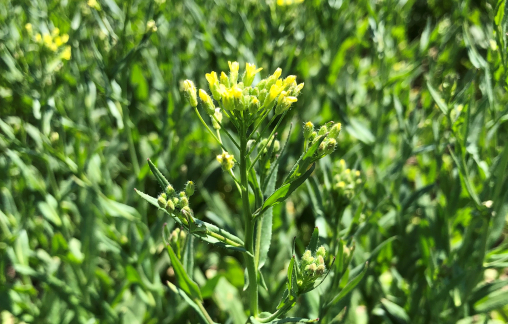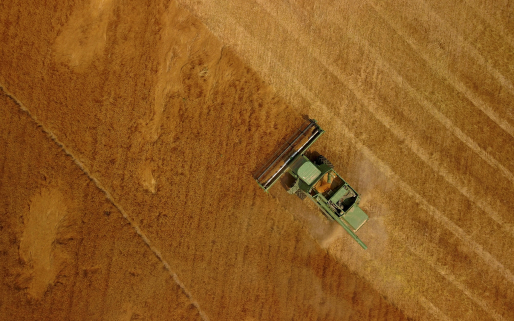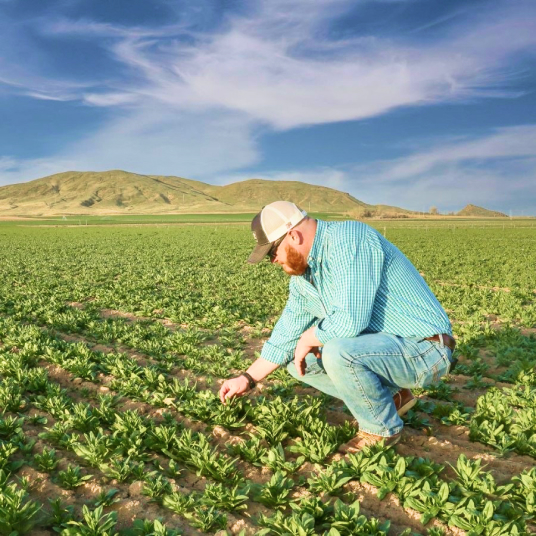The VISION Offtake Agreement guarantees purchase of all grain produced under the agreement at the specified price. This agreement is financially backed by our partnership with Shell, a global energy leader.
MAXIMIZE EVERY ACRE
Grow Camelina: The new cash cover crop
- Low input
- Drought tolerant
- Frost tolerant
Fill out the form below
Diversify revenue
Benefit soil health
Grow biofuel

What is Camelina?
Camelina is a broadleaf oilseed crop in the Brassica family similar to mustard or rapeseed. It is an ideal feedstock for the production of sustainable aviation fuel and renewable diesel, an emerging market poised for rapid growth.
Plant Camelina as a cash cover crop, double crop, or in a fallow rotation and benefit soil health while diversifying revenue.
Characteristics
- Cool season annual
- Both winter and spring variety types
- Thrives anywhere cereal grain is grown
- Short growing season (90-110 days)
- Germinates at soil temps as low as 36°F
- Small seed size: ~400,000 seeds/lb
- Grows 2-4 feet tall at maturity
Maximum Yield, Minimum Expense
Any Farming System
- Thrives in all soil types with good drainage
- Any tillage from no-till to conventional
- No special equipment required
Versatile & Resilient
- Suitable for irrigated or dryland farming
- Excellent drought and frost tolerance
- No significant insect or disease pressure
Low Input Crop
- Very low fertility demand (about half of canola)
- Only 4-6” rainfall or 0.25-.0.50 acre-foot of irrigation
- Short growing season (90-110 days)
Why partner with us?
Diversify Revenue
Soil Health and Resilience
Low Maintenance
Growing the Future of Energy
We have your back
Pioneering Genetics & Breeding
Our scientists and plant breeders continue to develop next-gen, high-yield varieties that stand up to environmental challenges.
Superior Seed Production
We employ strict quality measures in seed production and throughout cleaning, conditioning, and treatment at our state-of-the-art facility.

Expert Agronomic Support
Guidance tailored to your geography and needs, covering everything from planting to crop protection and harvesting techniques for optimal yield.
100% Offtake Agreements
We guarantee the purchase of all grain produced through our Grain Offtake Agreements, backed by our strategic partnership with Shell.

Fill out the form below
2024 Grain Offtake Agreements Available
Want to know more about how Camelina can add value to your farm? Fill out the form and we’ll be in touch!
FAQ
Camelina is extremely versatile and grows well in the Northern, Central and Southern Plains as well as the Pacific Northwest and Midwest. We are currently testing and developing varieties for the East and West Coasts as well.
Camelina grows well in most soil types with good drainage including sandy, loamy, and clay soils, and can grow in either acidic or alkaline soils. Contact VISION for a full crop production FAQ.
The USDA RMA expanded crop insurance for Camelina by allowing written agreements in select counties in Colorado, Idaho, Kansas, Montana, Nebraska, North Dakota, Oklahoma, Oregon, Texas, and Washington.
For more information visit the USDA Risk Management Agency website or contact your local crop insurance agent.
No special equipment is required. All conventional small-grain equipment and all tillage practices are compatible with Camelina. VISION agronomists will provide detailed guidance tailored to your equipment setup.
We have existing agreements with multiple storage locations across the United States. Growers are responsible for transportation to their closest location. Any required on-farm storage longer than 60 days will be compensated at standard storage rates.
Currently, there are limited labeled crop protection options: one pre-plant, two in-season for grasses, and two harvest aids. A top priority for VISION is expanding labeled crop protection for Camelina, especially introducing a broadleaf control option.

© VISION Bioenergy Oilseeds